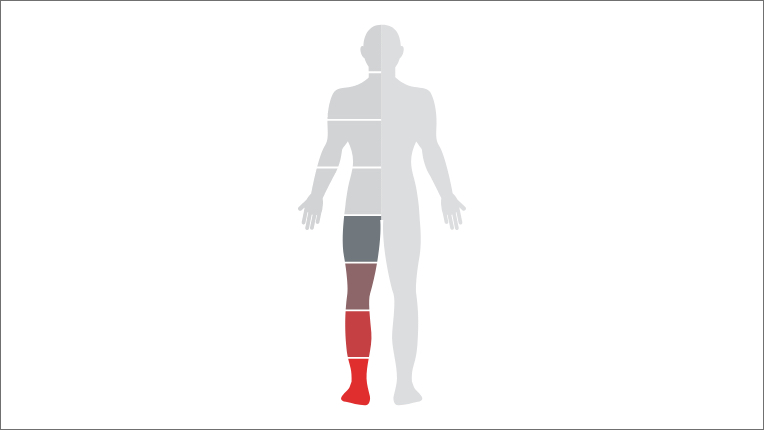Reduce Your PAD Risk: 3 Easy Tips

Download the PDF for an easy cheat sheet that reminds you to see your doctor if you experience any of the listed symptoms.
Reduce Your PAD Risk: 3 Easy Tips
Peripheral Artery Disease (PAD) affects millions of Americans every year and many more suffer unaware.
Understanding the disease and its risk factors is the first step in prevention. Read on to learn more about the connection between PAD and type 2 diabetes and what you can do to reduce your risk of this potentially life-threatening illness.
1. Understand Leg Pain
If you’re living with diabetes, it’s important to understand the signs and symptoms of PAD, especially as it’s often confused with arthritis, sciatica and other normal signs of aging.
PAD occurs when the arteries leading to your limbs and organs narrow and cause a stiff pain that doesn’t go away, even after resting. This most often affects the legs and can be prevented by talking to your health care team—even if you aren’t experiencing any symptoms.
2. Manage PAD Risk Factors
People living with type 2 diabetes are at an especially high risk for developing PAD over time. Certain risk factors such as personal or family history of PAD, cardiovascular disease, stroke and/or aging aren’t easily changed, but to help reduce your risk of PAD you can:
Quit Smoking
Smoking isn’t only a dangerous habit that increases the risk of heart attack, stroke and PAD, it greatly multiplies your risk if you’re living with diabetes. If you or a loved one is ready to stop smoking, the American Heart Association’s guide to quitting smoking can help.
Manage Your Diabetes
Managing your diabetes starts with learning about it and having your questions answered, but it can be tough to gain the skills you need—especially if you haven’t been to an education program. Now, find the support and information you need to live well with diabetes all in one easy place.
Lower Your Blood Cholesterol
High cholesterol contributes to the build-up of plaque in the arteries, which can significantly reduce your blood flow and lead to potentially life-threatening complications. Check our guide for three ways you can use food to help reduce your cholesterol numbers and be sure to talk with your doctor at your next visit.
Stay Physically Active & Eat a Healthy Diet
Healthy eating starts with healthy food choices. You don’t need to be a chef to create nutritious, heart-healthy meals you and your family will love. Our recipe collection can help you learn what to look for at the grocery store, restaurants, your workplace and any other eating occasion.
3. Talk With Your Doctor
Diabetes is one of the top risk factors for developing PAD. Get familiar with the resources available on our site to help motivate your heart-healthy lifestyle. Make sure to talk with your health care team even if you aren’t experiencing any symptoms for your best chance at PAD prevention.
Be sure to make an appointment with your doctor if you have:
- Not been screened for PAD before
- Leg pain that doesn’t go away after exercising
- Foot or toe wounds that won’t heal or heal very slowly
- Gangrene, or dead tissue
- A marked decrease in the temperature of your lower leg or foot, particularly compared to the other leg or to the rest of your body
- Poor nail growth on the toes or hair growth on the legs
- Erectile dysfunction
Diagnosing PAD

PAD often goes undiagnosed. Left untreated, PAD can lead to painful symptoms or total loss of a leg, and patients with PAD have an increased risk of heart attack and stroke.
Thankfully, PAD is easily preventable, beginning first with a conversation with your doctor. Your health care provider may ask about symptoms you’re experiencing and issue several non-invasive screenings. The American Heart Association and Know Diabetes by Heart have teamed up to encourage you to discuss PAD with your health care team to prevent this and other diabetes-related complications.







